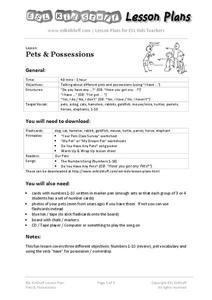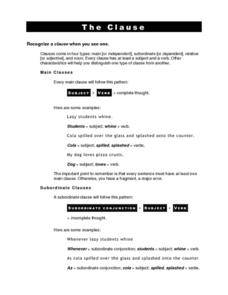Common Core Sheets
Finding Amounts with Proportional Relationship
Challenging worksheets to drill your mathematicians as they crunch numbers to find the proportional relationship using fractions.
Common Core Sheets
Finding Percent of a Decimal
Math sleuths find ways to solve problems to the nearest hundredth. These worksheets enable them find the percent of a decimal and is great for practice/reinforcement of this skill.
Math Worksheets 4 Kids
Decimal into Percent
Converting decimals into percents can be helpful while shopping. Connect this math skill to the life-skill of smart shopping, and you'll have your young consumers working hard to master the skill.
Math Worksheets 4 Kids
Decimal into Fraction
Encore, encore, again, and again—skills practice sheets are a proven tool for supporting skill mastery. Students can work on mastering skills of converting decimals into fractions with this exercise.
Math Worksheets 4 Kids
Fraction into Decimal and Percent
Practice makes perfect! Skilled mathematicians can practice their skills by converting each fraction into a decimal.
Math Worksheets 4 Kids
Fractions into Decimal and Percent
Why was the fraction skeptical about marrying the decimal? Because he would have to convert! This worksheet provides much needed practice for young mathematicians to convert fractions into decimals and percents.
Math Worksheets 4 Kids
Percent into Decimal
Young business entrepreneurs will need to know how to calculate interest rates before making millions. Empower their knowledge with a worksheet on converting percents into decimals.
Curated OER
Button Bonanza
Collections of data represented in stem and leaf plots are organized by young statisticians as they embark some math engaging activities.
ESL Kid Stuff
Adverbs
Run quickly. Walk slowly. Jump high. As part of their study of English parts of speech, language learners engage in a series of activities designed to introduce them to the descriptive power of adverbs.
ESL Kid Stuff
Numbers 1-20
Language learners engage in a series of games and activities designed to help them recognize and name the numbers from ten to twenty.
ESL Kid Stuff
Pets & Possessions
Language learners engage in a series of games and activities using pet vocabulary and the verb "have" to show possession or ownership.
ESL Kid Stuff
Describing Things (Adjectives)
Describing things using adjectives is the focus of this lesson designed for language learners. Class members play games, draw pictures, and sing songs, adding adjectives to describe animals.
ESL Kid Stuff
Describing People (Adjectives)
As part of a series of lessons focusing on the parts of speech, language learners engage in games and exercises that encourage them to use adjectives to describe people.
ESL Kid Stuff
Past Tense Activities - Irregular Verbs: Part 2
The second part of a two-part lesson plan on irregular past tense verbs prompts language learners to add four more verbs to the list of twelve they have been working with.
ESL Kid Stuff
Past Tense Activities - Irregular Verbs: Part 1
As part of a series of resources designed for English learners, a language arts lesson prompts kid engage in activities and exercises that focus on the past tense of irregular verbs.
ESL Kid Stuff
Actions - Present Continuous
What are you doing? Why, studying the present continuous tense, of course. Language learners engage in activities and exercises that provide them with practice crafting and answering questions using the present continuous tense.
ESL Kid Stuff
Daily Routines & Times of the Day
What time do you eat breakfast? Or go to school? Language learners practice crafting and answering questions about their daily routines.
ESL Kid Stuff
Morning Routines
Morning routines are the subject of this series of activities designed for language learners. Kids practice crafting questions and responses using the provided morning routine targeted vocabulary words.
ESL Kid Stuff
Telling the Time
What time is it? Language learners are introduced to time vocabulary with a series of activities, songs, and games that let them practice formulating and answer questions about time.
ESL Kid Stuff
Time Frequency - "How Often ...?"
How often do you ride a bike? Time frequency words are featured in a lesson designed for ESL/ELD classrooms.
Math Worksheets 4 Kids
Percent into Fraction
Young mathematicians show what they know about converting percents to fractions. A simple resource, one page, 18 problems, answer sheet included. Links to additional resources are provided for your early finishers or extended learning...
Minnesota Literacy Council
Scientific Method
Here is a resource with a descriptive approach to explaining the scientific method. It's simple, but effective for both introduction and reinforcement of this concept.
TLS Books
Dictionary Skills Review
Why do we use a dictionary? Your scholars will tell you why while demonstrating their dictionary skills. In addition to stating the purpose of using dictionaries, they will also show what they know about guide words, alphabetizing, and...
Robin L. Simmons
The Clause
This handy information sheet shows young grammarians how to distinguish among main, subordinate, relative, and noun clauses.

























